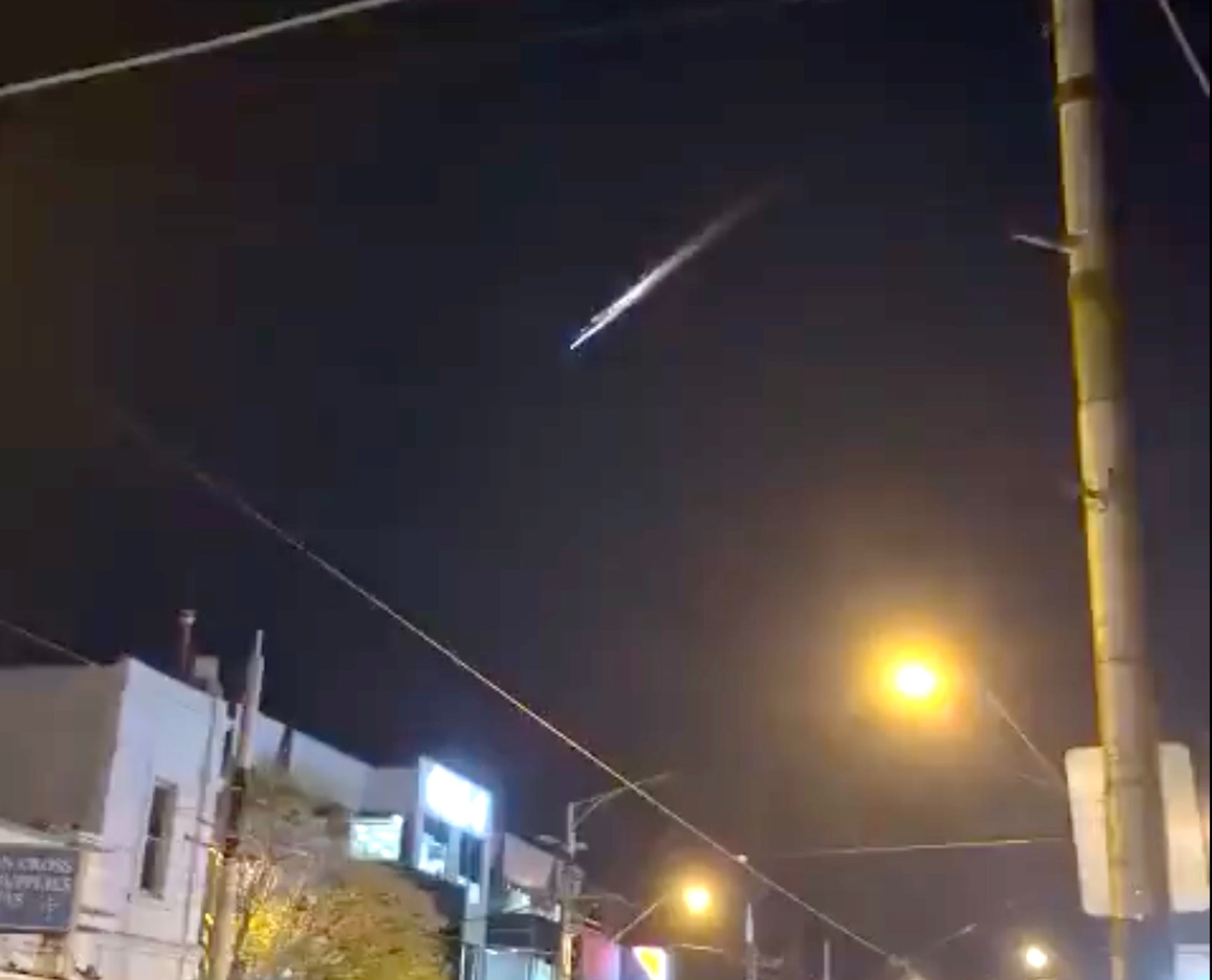The hours following a fireball sighting are akin to a detective mystery. Last night, residents of Melbourne took to social media to report sightings of a bright light moving slowly across the sky.
Video footage clearly shows the fireball breaking apart, indicating its large size.
There have been reports of a loud explosion across Victoria, known as sonic booms. These sounds suggest that the fragments of the fireball survived long enough to enter the lower atmosphere. This implies that at least a portion of the fireball was dense.
Furthermore, the fireball emitted discernible colors, particularly orange, in some videos. This suggests that the object was human-made and contained a significant amount of burning plastics or metals.
It is likely that the sighting was caused by several tons of space junk re-entering Earth’s atmosphere. This refers to any objects that humans have put into orbit but are no longer under our control. Surprisingly, there were no predictions for re-entry on the global space debris tracking site SatView.
An early analysis by US-based astronomer Jonathan McDowell suggests that the fireball may have been the third stage of a Soyuz 2 rocket carrying the navigation satellite GLONASS-K2. This rocket was launched by the Russian space agency Roscosmos on August 7.
The brightness of the fireball can be attributed to the high speed at which objects re-enter Earth’s thin upper atmosphere, exceeding 25,000 kilometers per hour.
To determine the exact nature and origin of the fireball, witnesses are encouraged to download the Fireballs in the Sky App and provide details of their sightings. By triangulating these reports, astronomers can determine the trajectory and potential landing locations of any surviving fragments.
Most space junk disintegrates upon re-entry due to the intense heat generated, reaching temperatures of 5,000 Kelvin or higher. However, some sturdier engine blocks may make it to the ground, prompting alerts to aircraft.
Improvements in tracking stations and modeling are necessary to enhance the accuracy of space junk re-entry forecasts.
Fortunately, the risk of space junk causing harm on Earth is minimal, as buildings and people are small targets compared to the vast unpopulated areas of land and sea.
As astronomers continue to investigate this captivating fireball, it serves as a remarkable start to Australia’s National Science Week, which aims to promote science education through various live talks and events.


